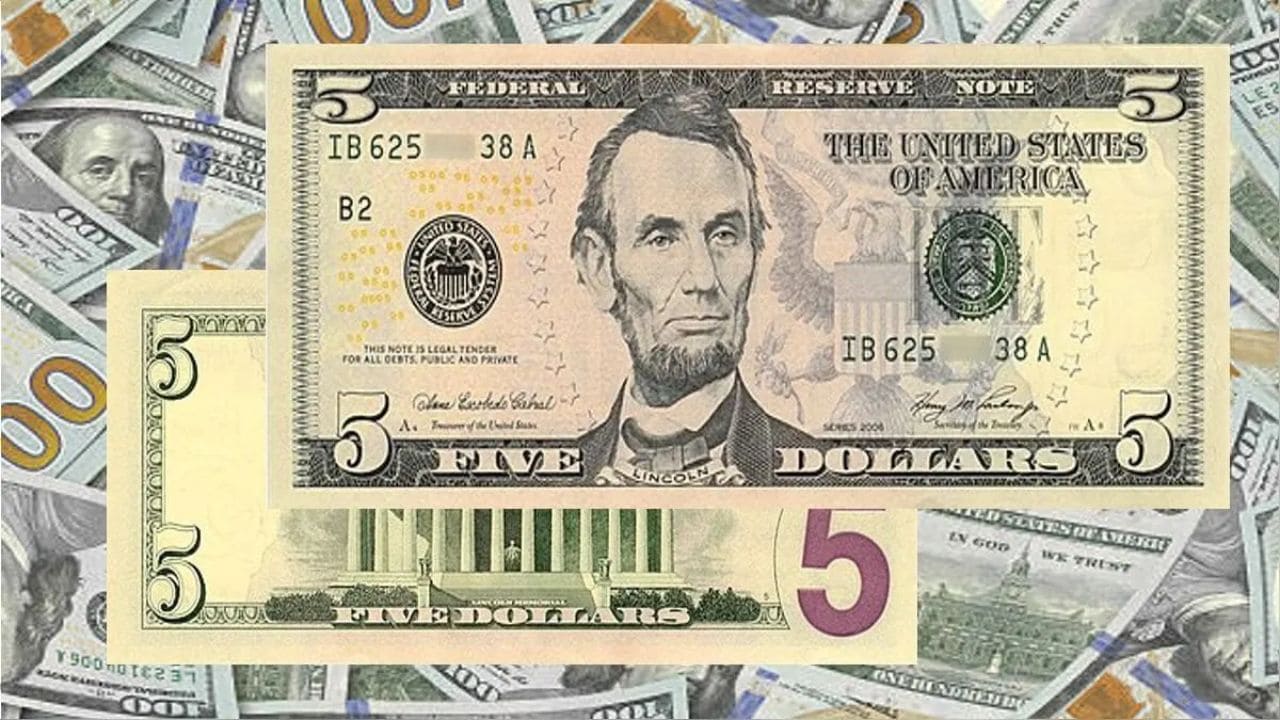The most innocent bank notes can hide great secrets from the moment they are printed. This is due to several factors, such as the time when they were designed, the period in which they were used or the characters that appear on them. As a result, in the United States there are several bank notes that reveal large amounts of money due to their high economic value and the fact that they are valued by collectors.
In the US numismatic market, for example, $2 bills are very well recognized. However, nowadays, $5 dollar bills are also highly valued and bidding wars are starting to take place to get hold of one of them, with prices reaching as high as over $280,000. Therefore, some of these bills can cost thousands or even millions, but it is essential to know how to identify them in order to get a good deal.
How to identify a high-value $5 bill
Not all bills of this amount represent a high economic level. In fact, some of them could even be fakes, but it is true that it is not easy to differentiate them from real ones. For this reason, collectors and lovers of numismatics in the United States have established a series of characteristics and procedures to identify which bills have large amounts of money behind them.
Among its basic characteristics, it features the profile of former President Abraham Lincoln, recognized as one of the most respected men in the history of the United States. In addition, the back of this bill bears an image of the Lincoln Memorial, which stands in the city of Washington. Thus, in order to identify which banknotes have a good value in the numismatic market, one must know the year in which they were printed. In addition, it is also necessary to take into account whether they have any printing errors, whether they have any special details that make them unique, among other conditions.
Collectors of coins and banknotes examine this type of cash carefully to verify and prove, first of all, the authenticity of the money, that is, to confirm that they are not counterfeit. Once this has been demonstrated, they study the banknote to calculate how much money it can hide from the moment it was printed, taking all factors into account.
Success stories
In 1929, First National Bank of Aransas Pass issued a banknote that, after several years, managed to be sold for as much as $3,360. In this specific case, the conditions that were established for it to cost this amount of money were the year of issue and above all because it appeared in the year of the Great Depression in the United States, an epic moment in American history and popularly known as the ‘Crack’ of ’29, due to the year in which it occurred.
However, this economic agency also determines that the Silver Certificate banknotes of $5 issued in 1934, the Demand Note of 1861 and the Treasury Notes of 1890, any of them, can reach a total value of up to $282,000 on the numismatic market in the United States.










